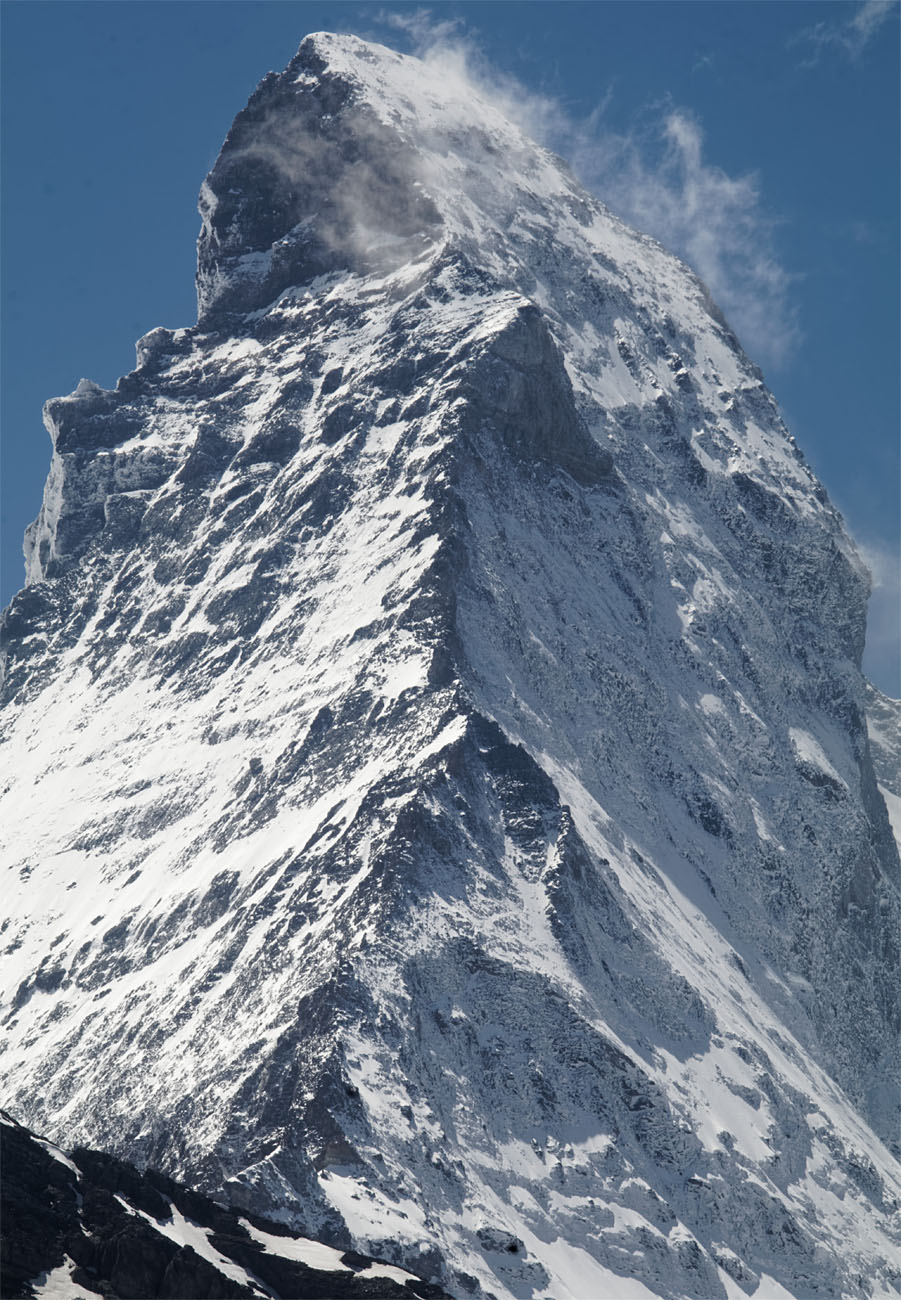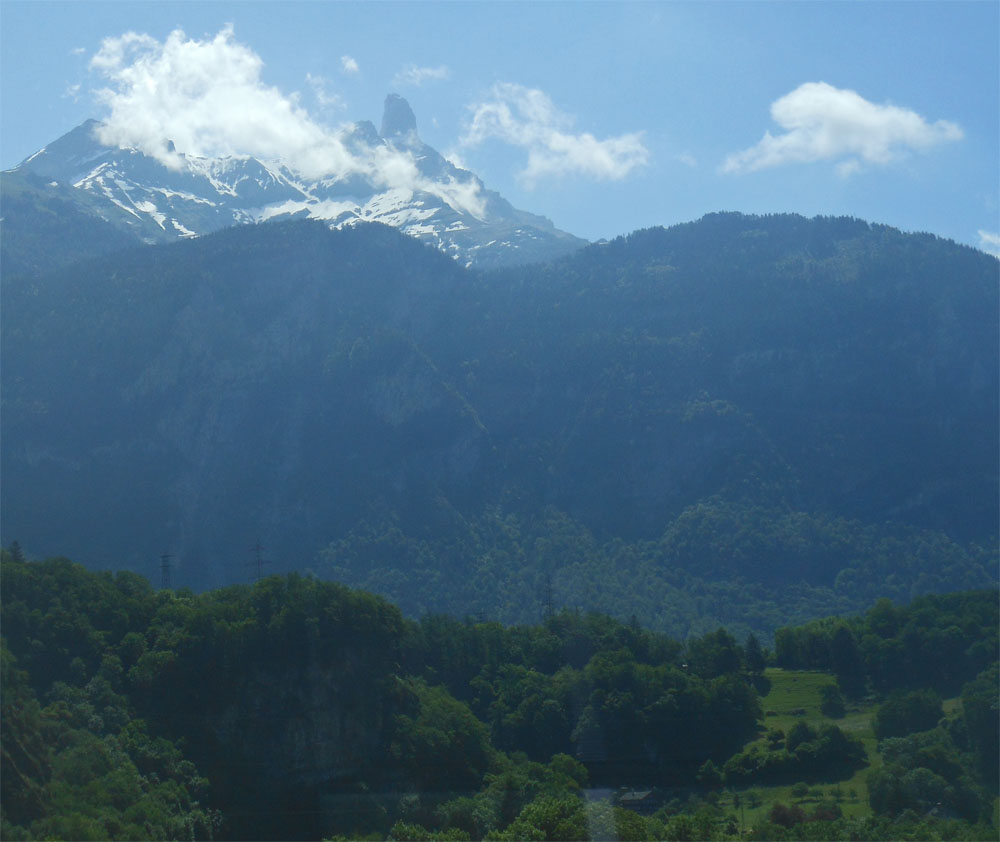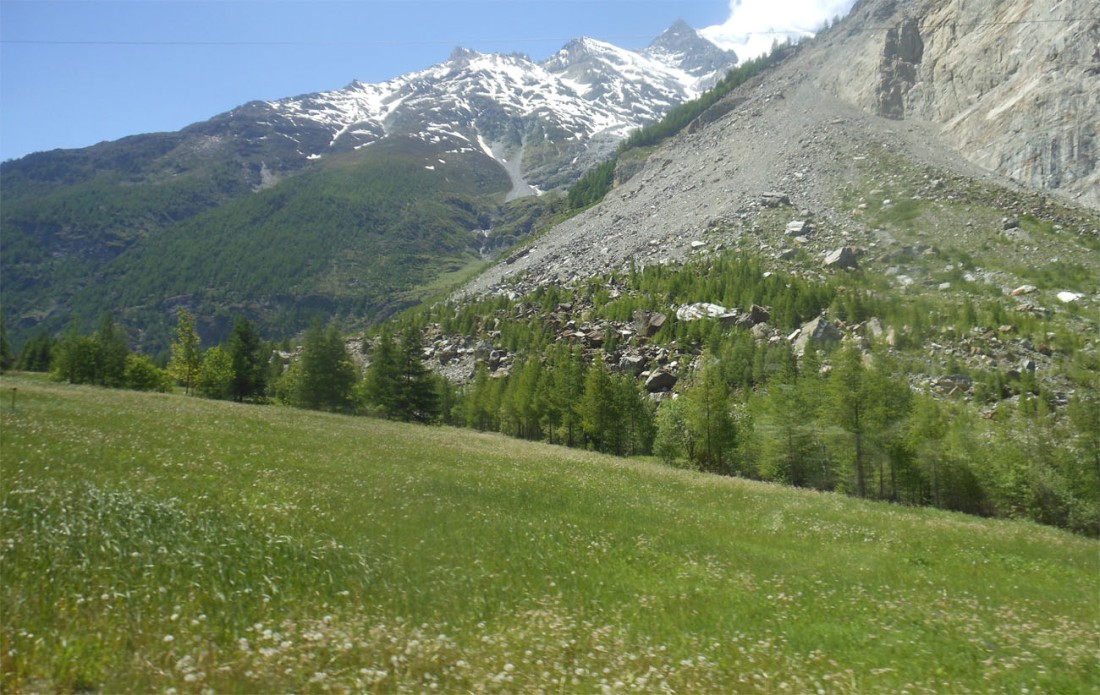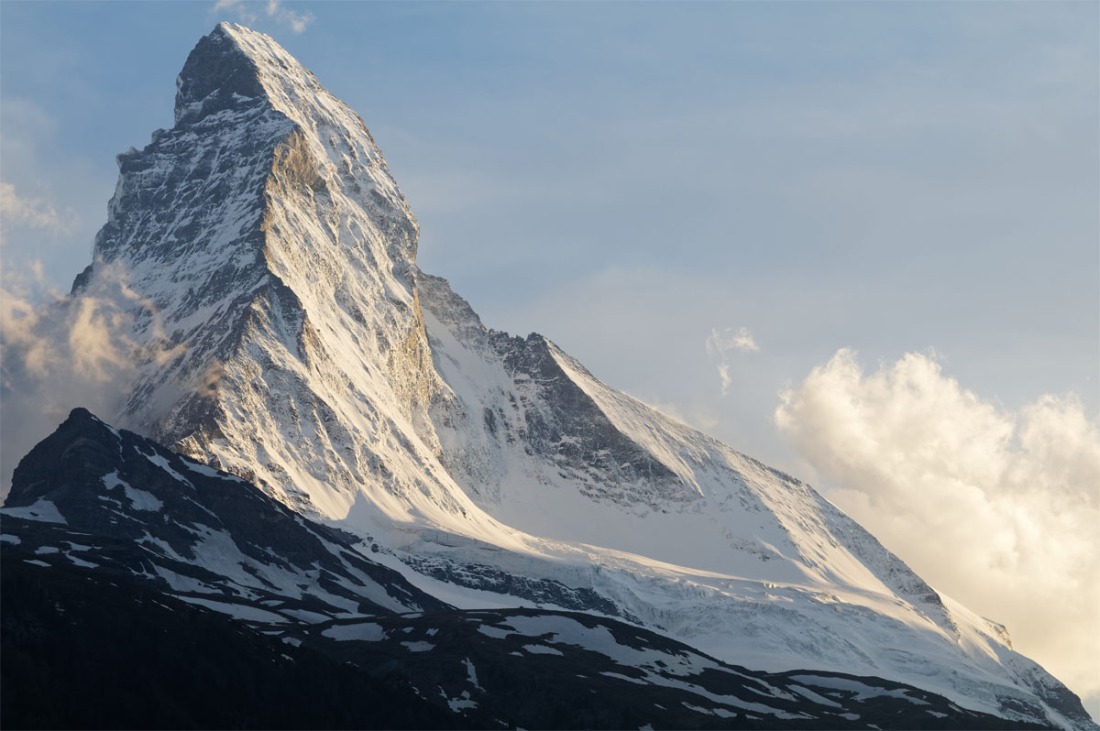Matterhorn: king of mountains, definition of mountains, the raw heart of a mountain after ice and erosion have stripped everything superfluous. Standing high, monstrous pyramid of unbreakable gneiss.

Switzerland: home of mountains. I’ve been needing to come back here for a long time. Even the train from Geneva painted alpine through the windows, pure white ridges and their epaulettes of clouds, cut in pieces by high towers of bare rock. At their feet are lakes as blue as gentians, and meadows that remind the rest of Europe that modern agriculture does not have to mean environmental death.


And so, into the Mattertal valley, on a cog railway that clings to the narrowest of ledges between mountain shoulders and a canyon that plunges to a milky glacial river, criss-crossed by stone bridges that make you giddy even while seated on the train. But, for certain, there is only one mountain, and rounding the last curve of track it greets you, a dagger pointing above the station to the stars.

The Matterhorn is irresistible to humanity. Flanked by higher peaks, yes, but none so perfect, none so tyrannical. It is easy to imagine the terror of early travellers across the 11,000 foot Theodul pass, shadowed to the west by this highest of triangles. Early mountain people speculated that the summit held a city of the dead – unreachable, and mystical.
But not everyone was convinced that it was beyond mortal man. It was my own country that supplied some of those who first scrambled up there – in a time before crampons, GPS or headlamps. Edward Whymper survived that day in 1865; four of his party did not. The rope that broke on their descent now lies in a glass case in Zermatt. It is hardly thicker than a human finger.

Today, most people who climb the Matterhorn do so under the watchful eye of highly experienced Alpine guides. The mountain ignores them, shouldering its glaciers and dazzling the valley just as it has since humans learned to count time.

As Luna rises over the forests of Monte Rosa’s flanks, it is time to reflect with a map and ponder tomorrow’s hiking trails.

Not going too close to the king of mountains. But its presence adds a royal intensity to the path.

There is only one mountain, and this is its realm.
Nice post, Adele. Matterhorn is a great monument to the human imagination. Hope you had a rewarding holiday.
LikeLiked by 1 person
Thank you Eliza. It was the kind of holiday where you’re very unwilling to leave! Alpine Switzerland is simply exquisite.
LikeLiked by 1 person
Stunning photos of such an amazing place!
LikeLiked by 1 person
Thanks Pete. The Matterhorn certainly kept my camera busy 🙂
LikeLiked by 1 person
It is unimaginable to me how mountain climbers made it to the top of Matterhorn back in 19th century – with all the technology and modern gear, I wouldn’t say it is easier but probably less dangerous. Imagine the weight of their ropes only back then!!! Plus the clothing that had nothing to do with modern stuff…
Hope to go there one day, not to climb but to enjoy the scenery 🙂
LikeLiked by 1 person
It is very hard to imagine, seeing that peak wrapped in constantly changing clouds. The Matterhorn looms over the valley with such overwhelming steepness it is difficult to believe that early mountaineers could even summon the courage to try, but Whymper was unshakeable in his belief that he could do it. It was the kind of era where ‘impossible’ wasn’t accepted as an answer. These days, most accidents occur if people try without a guide.
I hope you visit the Mattertal! The hiking trails are superb, although I am learning that what a Swiss hiker calls ‘moderately difficult’ is probably not what the rest of the world is likely to call it 😉
LikeLike
Haha, I know what you mean. As you know, in Canada, they mark a trail moderate and people start coming in flip-flops with small bottle of water, or without it. And when they find themselves in trouble they call search and rescue. If they are lucky to have a phone signal. In ‘moderately difficult’, difficult is the word to pay attention to 🙂
LikeLike
Yes, it certainly is! I was reading up on mountain climbing grades out of curiosity, and I see that the French method has an official top level of ABO – Abominably Difficult grade!
LikeLike
Adele, how spectacular! We have some might mountains here, but I don’t think any equal the Matterhorn! I would love to see it, but live vicariously through your images!
LikeLiked by 1 person
It does have the most extraordinary presence about it, just not its extreme triangular-ness but a real sense that this valley is its own. I suppose it is, in a way; it probably supplied a good part of the glaciers that scooped it out.
LikeLike
Your photos and description really draw me in. Your photos convey that the mountain packs incredible power – to actually be there in its presence I imagine must have a mystical intensity. It seems almost irreverent to want to climb it! (Not that I do, I hasten to add :))
LikeLiked by 1 person
Thanks Carol. The Mattertal valley itself is the most dramatic in western Europe – most of our highest peaks are around there – and then this impossibly steep pyramid stands like a lone sentinel at the top of it. It is mesmerizing. I have never seen any mountain that so overwhelms its surroundings like the Matterhorn does, and that in the presence of many higher peaks.
LOL, I’m happy viewing it from afar too! The thought of clinging to those exposed relentlessly steep ridges with a glacier waiting 4,000 feet below…
LikeLiked by 1 person
Thanks Adele. Even less dramatic mountains can have a magnetic and almost dizzying effect, so I can only try to imagine the power of the Matterhorn.
I am fascinated by mountain climbers but can’t really understand the appeal of deliberately subjecting oneself to such extremes and dangers.
LikeLiked by 1 person
Yes, it’s a thought-provoking topic. I guess it comes down to the human instinct to explore unknown places, but there is a severe cost and it was sobering to visit the mountaineers’ graveyard in Zermatt. Having said that, I do read a lot of mountaineering literature, and am intrigued by the firsthand accounts of human beings in places where I would never dare step myself. I find it a little easier to understand why someone would go up a mountain like the Matterhorn where success these days is a matter of skill and nerve, than why they would tackle, for example, K2 or the north face of the Eiger, where survival seems to be mostly a matter of luck. Maybe part of the problem is that when mountaineering started, just getting up Mont Blanc was original, but as the big summits have all been conquered, these days mountaineers are pushing themselves to find increasingly reckless goals. I don’t know.
Personally, I’m happy to explore the mountains as a scientist and writer, and keep to less terrifying paths 🙂
LikeLiked by 1 person
Yes it is interesting what drives mountaineers. I find humdrum life confronting enough as it is even if it doesn’t provide quite the same adrenal rush 😊 I do like to seek solitude though. (Bizarrely, some less technical mountain routes can be crowded these days!)
LikeLiked by 1 person
It’s so true about these climbers and thank you for pointing out the historical dangers. The Matterhorn is an impressive climb, but people need to be aware of the risks.
LikeLiked by 1 person